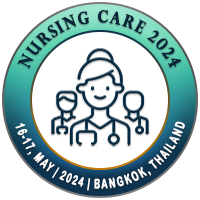
Dave Dhruv
Sankalchand Patel University (SPU), IndiaTitle: Treatment by Cardiopulmonary Resuscitation (CPR) for Cardiac Arrest Patients following Guidelines
Abstract
Cardiovascular disease (CAD) is leading a death. Cardiac arrest means heartbeats stop. To date, cardiopulmonary resuscitation (CPR) is an efficient method for cardiac arrest patients. CPR is carried out by chest compression followed by artificial ventilation. It helps pump blood around the person’s body when the heart cannot work. The European Resuscitation Council (ERC), or the American Heart Association (AHA), created guidelines for CPR. CPR treatment is used for both out-hospital cardiac arrest patients (OHCA) and in-hospital cardiac arrest patients(IHCA). Furthermore, Heart attacks are typically treated as a public health concern in hospitals. The COVID-19 epidemic is currently used as proof. Patients with COVID-19 have emitted dangerous aerosols that should not be inhaled by medical personnel (HCWs). Guidelines for COVID-19 cardiac arrest patients were developed by the European Resuscitation Council (ERC) or the American Heart Association (AHA). Safety for healthcare workers (HCWs) is the focus of this guideline. Automated external defibrillators (AEDs) are used only for CPR, according to research published recently. AEDs are medical devices that assist in rhythm analysis and provide an electrical shock to cardiac arrest patients.
Biography
Dave Dhruv is currently in his third year of a bachelor's degree in biotechnology. He has three publications: one research article, two review papers, and one book chapter, one of which is currently being published and one of which is being written. I also attended more than 11 national and international conferences and presented talks at several of them.

